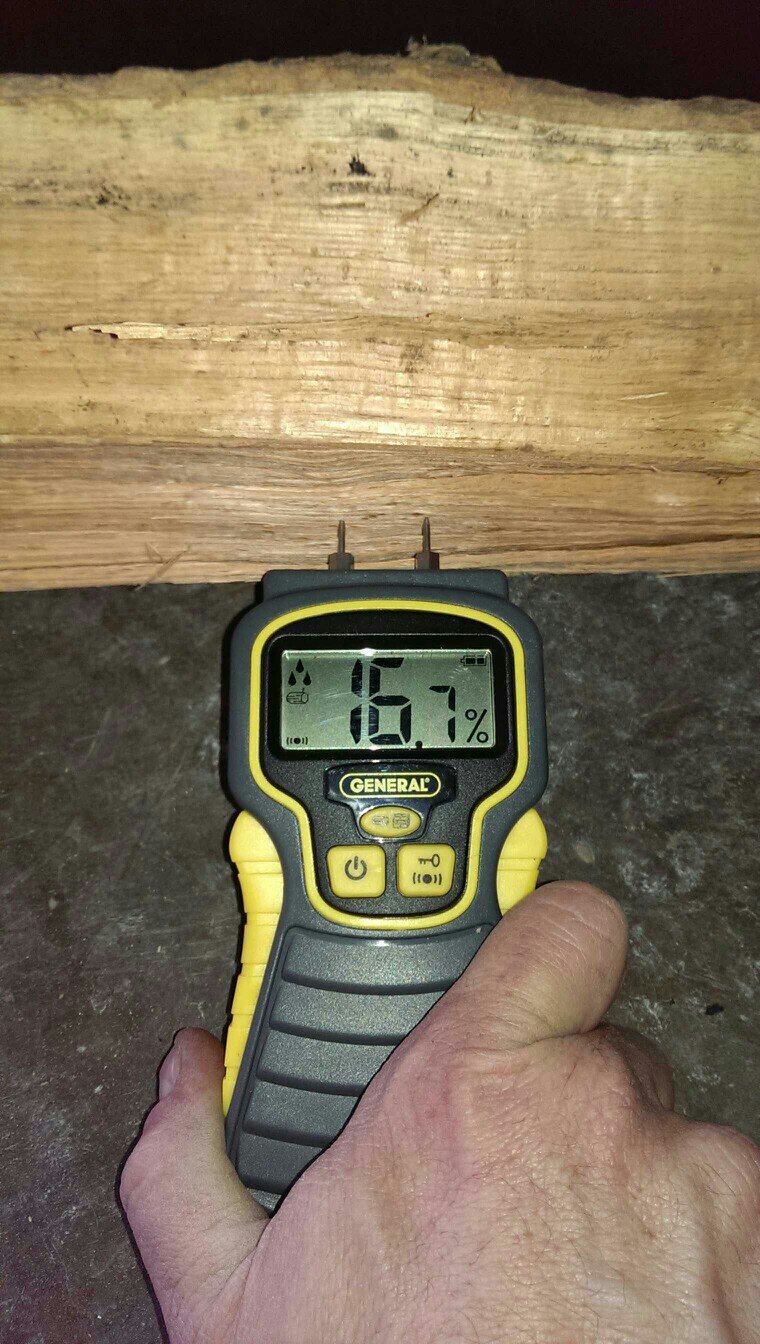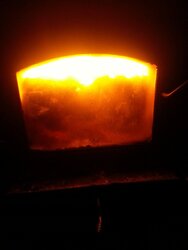It sounds like he has good draft too. I would cut the primary air down as low as it will go until the flames start to get lazy.
Quadra fire needs feeding every three hours!
- Thread starter Stillson lives
- Start date
-
Active since 1995, Hearth.com is THE place on the internet for free information and advice about wood stoves, pellet stoves and other energy saving equipment.
We strive to provide opinions, articles, discussions and history related to Hearth Products and in a more general sense, energy issues.
We promote the EFFICIENT, RESPONSIBLE, CLEAN and SAFE use of all fuels, whether renewable or fossil.
You are using an out of date browser. It may not display this or other websites correctly.
You should upgrade or use an alternative browser.
You should upgrade or use an alternative browser.
- Status
- Not open for further replies.
That's why I hear the steak sizzling in my firebox! I'm learning so much here. Thanks!Since no one else has mentioned it yet, please be aware that your stove requires seasoned wood with a moisture content of less than 20%. If you had just bought it, it is most likely still green; only few firewood sellers have the time and space to properly season wood and that usually comes with a higher price tag. I would suggest buying the wood for the next two winters as soon as possible. Stack it in single rows with lots of son and wind exposure. I prefer to cover the top but opinions differ about that. That way you will have at least semi-seasoned wood next winter and properly seasoned firewood the winter after (unless it is a lot of oak which needs up to 3 years to season). Since you had run your stove and flue really hot you are probably fine in terms of creosote. However, if you start reducing the primary air now please keep an eye on your flue that it does not accumulate a lot of creosote.
I
i'm doing the reverse. I thought I had to crank it up to get the heat.It sounds like he has good draft too. I would cut the primary air down as low as it will go until the flames start to get lazy.
you should get yourself a moisture meter so you know if there is allot of sizzling for quite a while your wood probably isn't dry enough a little sizzle is ok. I know I will get crap for this but I never dry any wood other than hickory more than a year and it always tests 20% or less on a fresh split face I know lots of guys say oak takes 3 yrs but that is not my experience. Get a moisture meter and you will know for sure They are pretty cheap for how helpful they are.
HotCoals
Minister of Fire
And you will get more heat doing that..but you also will waste more up the flue.I
i'm doing the reverse. I thought I had to crank it up to get the heat.
JA600L
Minister of Fire
I have a 4300 model with a similar house and mine burns all night. However, I am not able to hold 70 degrees most of the time.
blacktail
Minister of Fire
I think I would be doing a thorough inspection after running it so hard.
KD0AXS
Burning Hunk
you should get yourself a moisture meter so you know if there is allot of sizzling for quite a while your wood probably isn't dry enough a little sizzle is ok. I know I will get crap for this but I never dry any wood other than hickory more than a year and it always tests 20% or less on a fresh split face I know lots of guys say oak takes 3 yrs but that is not my experience. Get a moisture meter and you will know for sure They are pretty cheap for how helpful they are.
Yes definitely get a moisture meter. I picked this one up a couple weeks ago at Lowe's for $25.
http://www.lowes.com/pd_78059-56005...l=1¤tURL=?Ntt=moisture+meter&facetInfo=
Take splits off your stack and split them in half, then read the moisture on the freshly split face. Push the prongs firmly into the wood to get a good reading.

Last edited:
Ok will do! Thanks!you should get yourself a moisture meter so you know if there is allot of sizzling for quite a while your wood probably isn't dry enough a little sizzle is ok. I know I will get crap for this but I never dry any wood other than hickory more than a year and it always tests 20% or less on a fresh split face I know lots of guys say oak takes 3 yrs but that is not my experience. Get a moisture meter and you will know for sure They are pretty cheap for how helpful they are.
I
I appreciate the info. Thanks!Yes definitely get a moisture meter. I picked this one up a couple weeks ago at Lowe's for $25.
http://www.lowes.com/pd_78059-56005-MMD4E_0__?productId=3136919&Ntt=moisture meter&pl=1¤tURL=?Ntt=moisture+meter&facetInfo=
Take splits off your stack and split them in half, then read the moisture on the freshly split face. Push the prongs firmly into the wood to get a good reading.
Thanks for the pic. It certainly helps!Yes definitely get a moisture meter. I picked this one up a couple weeks ago at Lowe's for $25.
http://www.lowes.com/pd_78059-56005-MMD4E_0__?productId=3136919&Ntt=moisture meter&pl=1¤tURL=?Ntt=moisture+meter&facetInfo=
Take splits off your stack and split them in half, then read the moisture on the freshly split face. Push the prongs firmly into the wood to get a good reading.

I hope I didn't hurt anything, it's only 3 years oldI think I would be doing a thorough inspection after running it so hard.
More air will cool the fire and prevent strong secondary combustion in a modern EPA stove. Closing down the air forces a the draft to pull more strongly on the secondary air through the secondary ports in the tubes. That reburns the gases and raises the stove temp. If you have a thermometer on the stove top and pipe you will see the stove top temps go up and the pipe temp go down. That is more efficient burning and heating.I
i'm doing the reverse. I thought I had to crank it up to get the heat.
I've learned so much from all of you nice people. Thanks so much. It's truly fascinating.More air will cool the fire and prevent strong secondary combustion in a modern EPA stove. Closing down the air forces a the draft to pull more strongly on the secondary air through the secondary ports in the tubes. That reburns the gases and raises the stove temp. If you have a thermometer on the stove top and pipe you will see the stove top temps go up and the pipe temp go down. That is more efficient burning and heating.
HotCoals
Minister of Fire
That's all very true and the correct way to burn but you can get the stove hotter with more air none the less.More air will cool the fire and prevent strong secondary combustion in a modern EPA stove. Closing down the air forces a the draft to pull more strongly on the secondary air through the secondary ports in the tubes. That reburns the gases and raises the stove temp. If you have a thermometer on the stove top and pipe you will see the stove top temps go up and the pipe temp go down. That is more efficient burning and heating.
With our stove after a point the stove flue gets hotter and the stove tops out at about 500-550F. Cut back the air and the stove top heads north of 650F pretty quickly and the flue temps come right down. Not the same in a cat stove though. Of course I've never run the stove for hours like this so maybe eventually the body temp will creep up.
blacktail
Minister of Fire
I hope I didn't hurt anything, it's only 3 years old
There was a thread not too long ago about someone ruining a liner by running too hot. Three years of hard running is plenty of time to cause damage.
DanCorcoran
Minister of Fire
you should get yourself a moisture meter so you know if there is allot of sizzling for quite a while your wood probably isn't dry enough a little sizzle is ok. I know I will get crap for this but I never dry any wood other than hickory more than a year and it always tests 20% or less on a fresh split face I know lots of guys say oak takes 3 yrs but that is not my experience. Get a moisture meter and you will know for sure They are pretty cheap for how helpful they are.
I agree with getting a moisture meter. But remember on drying time, not everyone has your situation. It all depends on relative humidity, temperature, wind speeds, how the wood is stacked and covered (or not), size of the splits, etc. Don't assume that because you can dry it in a year or so that other can, as well.
stephiedoll
Burning Hunk
Been running a Quad 3100 step top for about 5 years in the basement of a 3000SF raised ranch. Very high quality little stove that seems to love being run hard. The forced fan furnance starts to kick in to help when the outside temps drop below 25F or so.
Attachments
It's a probe thermometer and my flue is 6 inch double wall pipe.Is your flue thermometer a probe thermometer or a magnetic surface mount thermometer?
I love my quad that's why I want to run it the best I can. Where do you keep your vents positioned?Been running a Quad 3100 step top for about 5 years in the basement of a 3000SF raised ranch. Very high quality little stove that seems to love being run hard. The forced fan furnance starts to kick in to help when the outside temps drop below 25F or so.
i most certainly will! I really appreciate the help!Good news, glad I asked. If your temps had been surface readings I would be much more concerned about your flue piping. As it is I would try reducing the primary air further and try that fan trick. It really works.
By the way. What are your thoughts on an outside air kit?I love my quad that's why I want to run it the best I can. Where do you keep your vents positioned?
i most certainly will! I really appreciate the help!
Get a decent stove top thermometer. It will help you see the relation between air control setting and stove top temperature.
http://www.condar.com/stove_top_meters.html
http://www.condar.com/stove_top_meters.html
- Status
- Not open for further replies.
Similar threads
- Replies
- 21
- Views
- 592
- Replies
- 0
- Views
- 322
- Replies
- 3
- Views
- 454
- Replies
- 1
- Views
- 165


